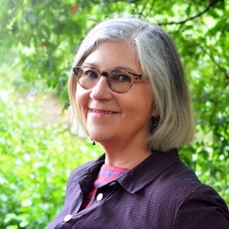There is fun, and then there is Type 2 Fun. These are the activities we only recognise as fun afterwards. They can be physically challenging such as mountain climbing or where there is a fear, perhaps of being laughed at.
I do comedy improv classes and hadn’t realized this was Type 2 fun. I still get scared with some of the games/activities but the feeling I get when it goes well is exhilarating, and when I mess up – hey, no one cares!
There are so many calls on our leisure time from people to social media, and all the new avenues that call to us. We spend more time watching TV and a lot more time scrolling online; both are a way of passing the time but are they really fun?
It got me wanting to explore fun further, and I found the PLAY model by Michael Rucker.
Think of a 2×2 matrix with the horizontal axis about challenge and the vertical access around levels of fun. So we have four possible options with this PLAY model.
-
(P) PLEASING. This is low challenge and high pleasure.
It’s easy to fit this into our life, and includes playing with a pet, time with friends or family, involvement with a hobby such as riding our bike or creative crafts. Sometimes we fill our life with so many things that we forget about the simple pleasures of stroking a cat and a good conversation with a friend.
-
(L) LIVING. This is high challenge and high fun.
You have to put in the effort to learn a new skill or to step outside your comfort zone but the rewards are worth it. It could be to learn to skateboard or take up swing dance, for example. The experience can also oscillate between learning and enjoyment, it’s hard learning a new skill. These are unlikely to be the main way we have fun but add zest to our life. It can be an exhilarating experience. It’s worth looking back and thinking of the experiences you have had that make you feel truly alive. These all fit into this category.
-
(A) AGONIZING. This is hard challenge and low fun.
Why on earth would we want to spend time on these activities? They are challenging with little reward. They are time vampires, taking us away from more promising and enjoyable activities. There are some that we need to do – clean the bathroom and other household chores, but there are ways around these. To do them faster or outsource them to someone else. Talking with a client today, she regularly says yes to activities – volunteering, wider family events and it was only when I said to her – “could you say no?” that she had an ah-ha moment. Let’s do less of these!
-
(Y) YIELDING. Easy challenge and low fun.
We slip into these activities, another hour gone scrolling on social media, or playing some online game. Things that have become our ‘go to’ when we get a bit of free time. We can lose track of time, and that time would be better spent on PLEASING or LIVING fun –such as learning a language or going for a walk with a friend perhaps.
It’s worth reviewing how you spend your time and to see which ‘box’ you would put your activities into. With options 3, AGONIZING and 4, YIELDING, what do you gain from these? Could you stop any, and what difference could that make. You may find that you are wasting time doing things because you feel that you ought to, rather than as something that is meaningful for you.
It is also worth looking at options 1 and 2 as well. Are you in a bit of a rut with the PLEASING activities, could it be useful to introduce some new things? Do you have enough LIVING activities, perhaps you have been playing it safe, is now a good time to challenge yourself?
You can also consider aspects of your life and realise that a decision to organize a boat trip with friends could be stressful if you have to pay the money and claim back, and you have somehow taken on an offer to provide the food for the picnic (all high challenge). Perhaps better to meet in the park with a pot luck meal and only make a final decision on location when you’ve checked the weather (more fun).
 Dr. Denise Taylor, Chartered Psychologist and Vision Quest Guide, gained her doctorate at 64, researching how people can find meaning in life after full-time work. Author of 8 books including Find Work at 50+, her next book – Rethink Retirement will be out in early 2023.
Dr. Denise Taylor, Chartered Psychologist and Vision Quest Guide, gained her doctorate at 64, researching how people can find meaning in life after full-time work. Author of 8 books including Find Work at 50+, her next book – Rethink Retirement will be out in early 2023.


